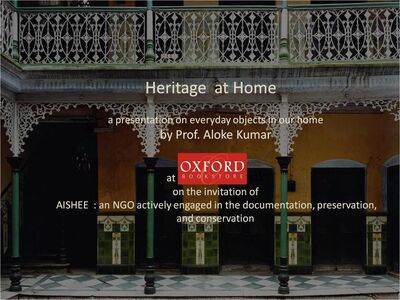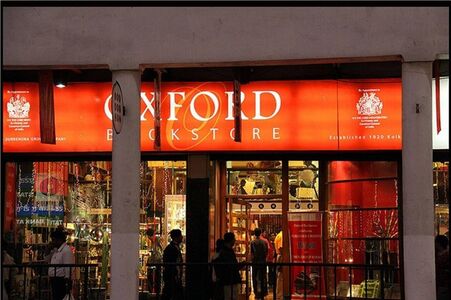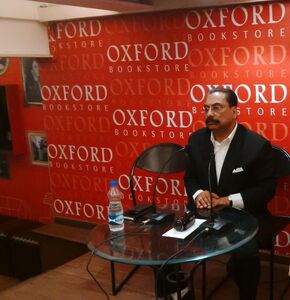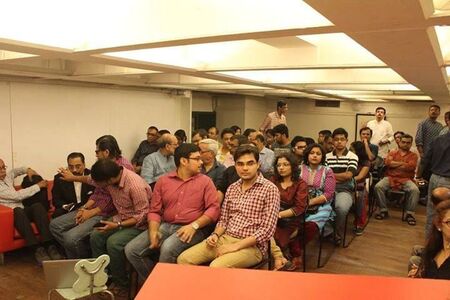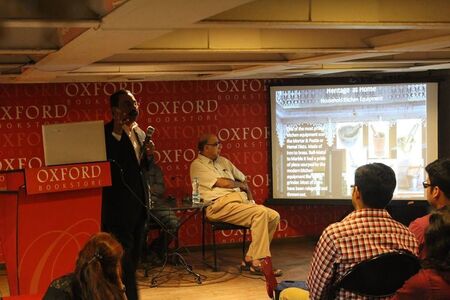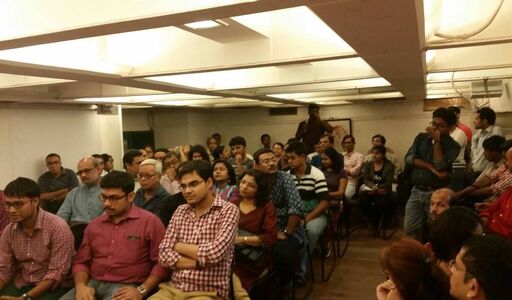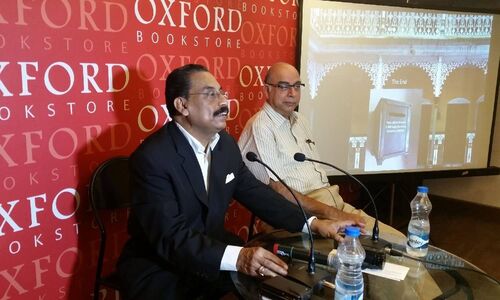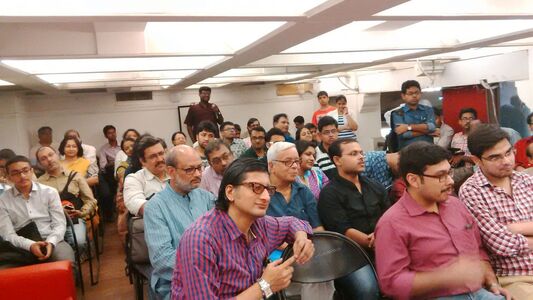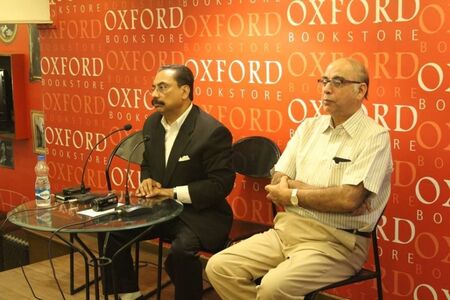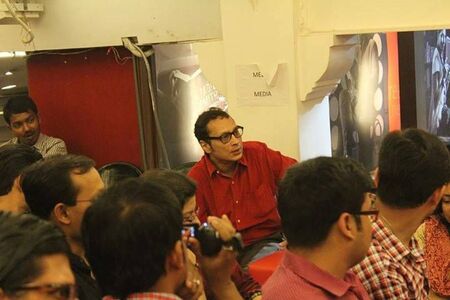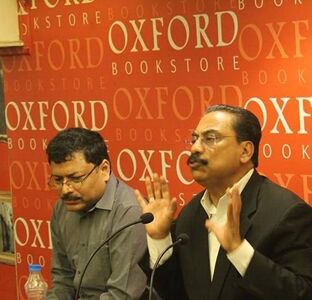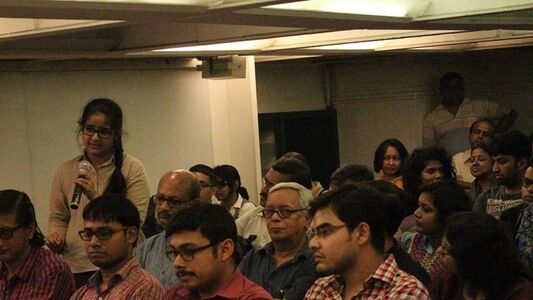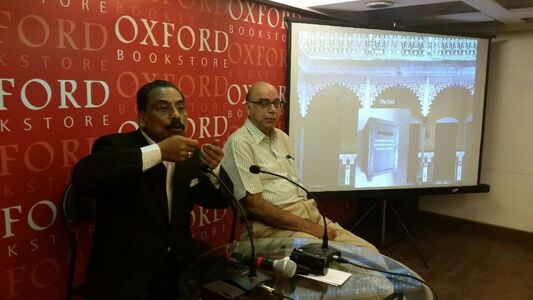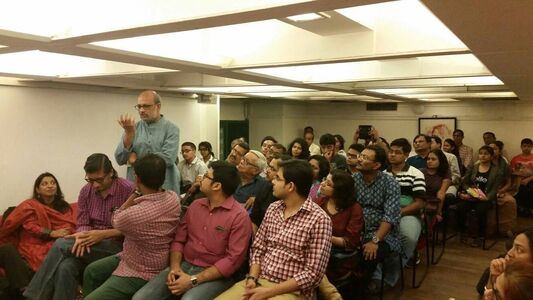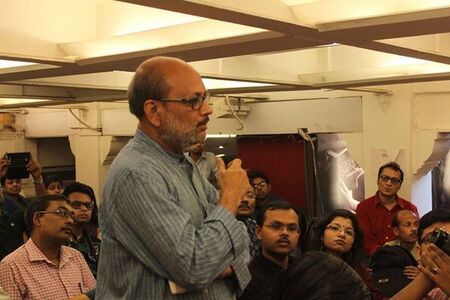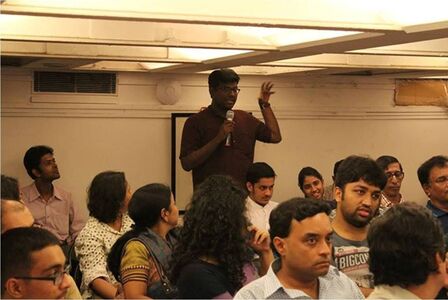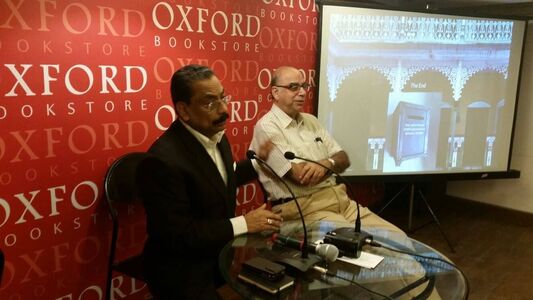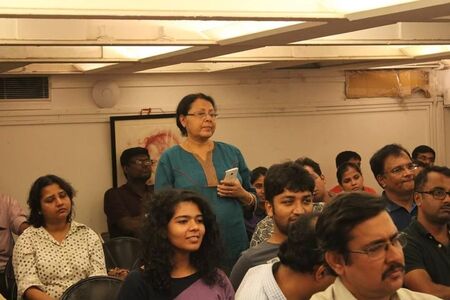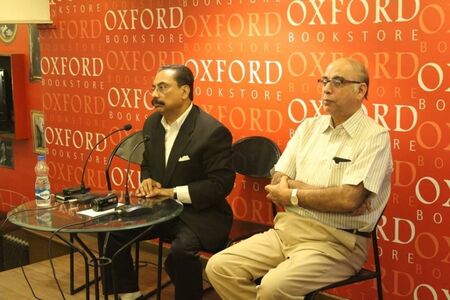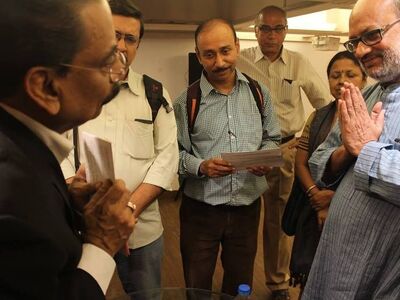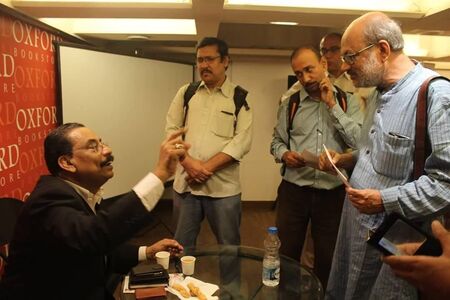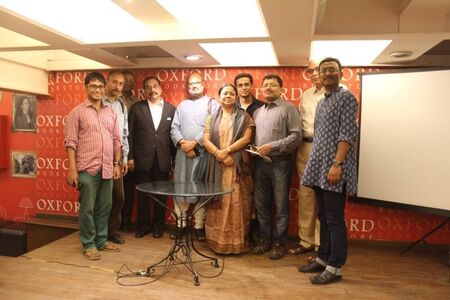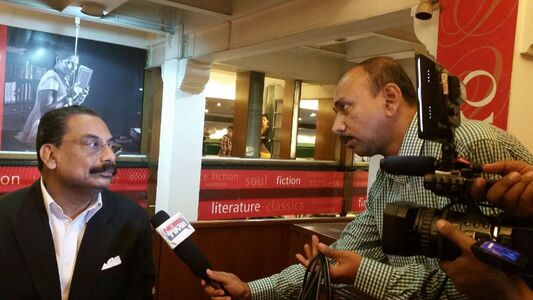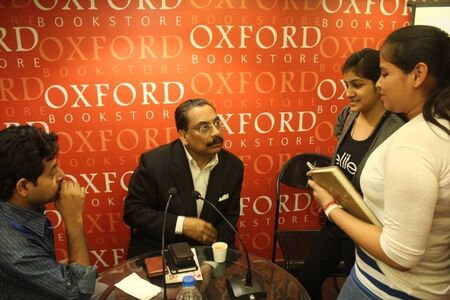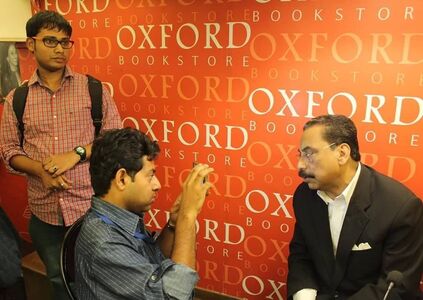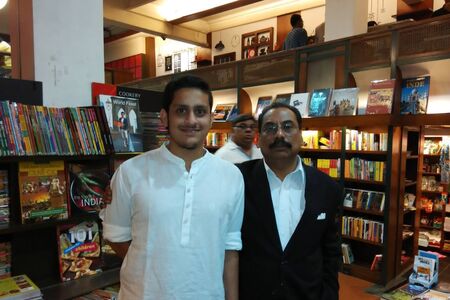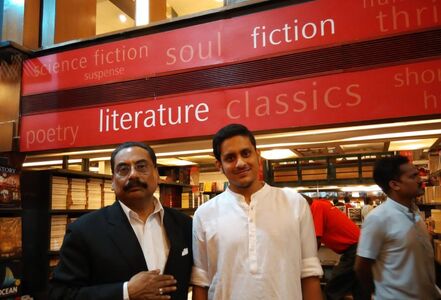A presentation on everyday objects in our home. 22nd November 2015
Oxford Book Store, Calcutta hosted a Slide Lecture presented by me on the invitation of AISHEE: an NGO actively engaged in the documentation, preservation, and conservation. The lecture titled: Heritage at Home was a presentation on everyday objects in our home. Heritage is to value objects and qualities and cultural traditions that have been passed down from previous generations. It could also be property that is inherited. In Sanskrit it is विरासत Virāsata, in Hindi it is known as परंपरा paranapara. In Bengali it is ঐতিহ্য Aitihya.
The general belief when you think of conservation of heritage is to look outside your home. The crumbling terracotta temple, the preservation of a site. But never at home. How can Heritage reside at home? However, like Lakshmi it does. There is a saying that charity begins at home. And so does heritage. Heritage is your culture and the many objects left behind by your ancestors.
I did not talk about the identifiable objects like the furniture, books and paintings. My subject encompassed objects which we do not identify as a part of our heritage and culture. I started at the very beginning with the marble name plate that you had at your ancestral house sold to the property developer.
I then moved inside the home and straight went inside the kitchen. Our kitchen utensils. রান্নার বাসন, রন্ধনপাত্র, বাসনপত্র have been replaced by modern kitchen wares and crockery. The old bell metal ones being carried in rickshaws to be sold away to the ‘baswanwallah’. But all of these are hand crafted and most of them are a part of our heritage.
If you look around your home, you will find several things used every day that represent the heritage of Indian crafts. To illustrate I focused on some utensils preserved by a middle-class family. It contained rare containers of Ganges as well as Drinking water. There are several water glasses made of bell-metal and one Flower Vase. But I pointed out that his is not the case with the utensils used for Puja. Contrast to the earlier instance the Puja utensils are preserved well. Is it because the gods like them? Or we do not want to displease them by substituting them.
One of the most prized kitchen equipment was the Mortar & Pestle or Haman Dista. Made of iron to brass. Bell-Metal to Marble it had a pride of place usurped by the modern kitchen equipment like mixer grinder. Most of them have been relegated and thrown out.
More near at home we have given up our fountain pens for the ball points. Many a dropper fill fountain is lying at our home. Make attempts to use them. If not preserve them. Pass on to your next gen as fountain pens give the best handwriting. One of the fastest items that evaporated from the face of the planet, with e-mails are hand written letters. Completely disappeared and is rare species. Needs to be protected.
My suggestion is to frame family letters and preserve them. There is a particular style of framing these letters which I have instituted and have named it ‘sandwich framing’ which I went on to explain.
With letters can reading glasses be far behind? From Pince-nez to Rim-less. With Silver to Wooden covers. Covered in velvet. Or leather cases. They are a delight. Usually sold away at a pittance as the glass power is of no use and the frames give you very little monetary return yet destroyed every day.
And off course while reading the letters with that dainty glass you need the paper weights to keep them from flying off. From brass to glass: you have them all. And they come in all shapes and sizes. The common once just a blotch of brass to the coloured bubble glass. I am sure you will find many hidden in your old writing tables.
With photographs being digitalized old albums are being discarded with photographs. Do digitalize for posterity but preserve the photographs and Album. They are priceless. Including photographs of your neighbours and that long shot of Calcutta from your terrace.
Most old prints of Gods and Goddess are being left under the nearest Banyan tree where there is a Shib Mandir. These are priceless Oleographs printed in Germany or our very own Chor Bagan in Chittpore. These are printed in late 19th. and early 20th Century. There are many which are hand coloured.
The image of Swami Vivekananda is a Chromo Lithograph Poster printed in Chicago in 1893 is being traded by many for the laminated ones. Along with the prints there are innumerable porcelain idols of Gods and Goddess in homes. These came from Dresden, Germany around 1895 and were bought by the upper middle-class households. With the lapse of time, they have been related to an isolated place in homes many of them sold away.
There are number of items in our household related to Ladies Vanity Ware which are part of our old tradition. The Silver mounted comb, brush and mirror. Then there are the Attar bottles of old. All very delicate and need preservation. We all have old Sarees at home. Banarasi, Jamdani. Brocade. With Gold and Silver embroidery. Inherited from our mother and grandmother. Most of these are used for exchange of kitchen utensils of Stainless Steel or sold to the ‘pheriwallah’ shouting : ‘purano saree bikkiri ache’. These are priceless and worth preservation.
Old watches and clocks are in abundance at our home. As your father received the marriage watch and your mother took care of it. Get it repaired and oiled to wear it. Yes, off course you must wind it every day without fail. But it is worth it.
Most Gold coins at home are grabbed by the ladies to remodel it into Jewellery. The Silver still gets some attention. The rest has no value. Earlier there used to be a plate where you threw in coins which are commemorative, rare and fading. The art is lost along with the preservation of medals.
Have you accidentally broken one of the glass lamp shades lately and taken an identical to Poddar Court Market to buy another? You must have received a shock. The older glass lamp shades have been replaced with plastic ones. Glass lamp shades are rare. Even if you have one make arrangement to preserve and hang it or better still present it to your next gen as a study light fitted in a stand.
Many Calcutta household have old gramophone and vinyl records. With the world going digital and first the Walkman and then the Mobile phones the way we listen to music has changed. With this the record player and the vinyl records were stored first in the back room and then sold away. Many of them have found their way to collector’s home.
I am not asking you to collect bottles. After all they come in dime a dozen and your mother must be telling you to throw them away. There are many which are rare. The first Coca Cola bottle fetches you $2,40,000. No, I am not talking about it. Simple old bottles left at home by our ancestors. With plastic making an inroad make a collection of them and keep them.
The history of Pad Lock dates to 25–220 AD in China since the late Eastern Han Dynasty. The locks are changing into cheaper versions and digital. The decorative lock is long lost. Preserve old locks at your home. I have seen some astounding ones in Calcutta homes, especially the brass ones.
Every other day an Ezraj is destroyed. An instrument of antiquity which was popular at one time has become an instrument of disuse. With the Harmonium gaining ground many old instruments are finding their way to the junk shop. From Sitar to Ek tara.
The presentation did NOT include the obvious which are recognized as Heritage and respected. These include antique Books, Maps and Prints. Furniture and Fitting. Most household are aware of these and try their best to preserve or sell them to collectors.
What am I saying? To turn your homes into museums? No. Try to preserve our Heritage by identifying objects which are lying in your home. If you find it of interest club them thematically and place them in a show case. If you are not interested sell them to collectors or if you are not interested in the money donate them to repository like Gurusaday Museum, making a point that it is preserved as a contribution from your family. Do not allow it to be destroyed. Try to keep them, your next generation will thank you.
The Raja Dinkar Kelkar Museum in Pune, Maharashtra is another such repository. It contains the collection of Dr. Dinkar G. Kelkar (1896–1990), dedicated to the memory of his only son, Raja. The museum’s collection depicts the skills of the Indian artists of the time. The door frames, vessels, utensils, ornaments, musical instruments, lamps, paintings and carvings represent outstanding examples of their art.
Heritage at Home is a matter of pride. You need not have item of the same genre to build a collection. It could be just one item each of several artefacts placed to gather thematically. For example, all items related to China could be together. All Puja ‘Saramjan’ could be collected in one place. We all need to be aware of the heritage objects around us and try to keep these heirlooms at our home.

